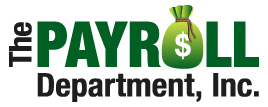3 Steps to Make Sure Money Works for the New Business Owner
Whether you are starting a small business intentionally or falling into it because your idea for selling a doo-dad has gone crazy, one thing you will definitely need to do is establish a process for incoming and outgoing money. That’s called keeping the books and every bit of success relies on your paying attention to the money side of your business. Here are 3 steps for the very greenest newbie that hasn’t a clue what language accountants speak.
 Step No. 1 – Get the big picture
Step No. 1 – Get the big picture
The idea, just like running your household, buying stocks and investments, or keeping a buck in your wallet, is to know that more has to come in than goes out. To make that happen, you have to know what is coming in and what is going out. You also have to understand that there will be expenses and costs that are not linked directly to your product or service. It’s just like you have to pay for electricity and water at home, you will have to pay for your business set-up costs like registering your business with the state, and even pay to attend events where you will sell or meet potential clients. You have to know where you stand financially at all times, and what is coming up around the next corner. Save for a rainy day because there will always be unexpected turns.
Step No. 2 – Get the system organized
Now this is a HUGE element because disarray will sink your ship faster than just about anything else. Just like in your personal life, you will have to file an annual tax return. Even if your business is combined with your personal return, you have to have accurate numbers to include. If you forget some income, and get caught, it’s costly (and illegal!) and if you forget expenses, it is costly, too, because you can pay too much in taxes. Here are 3 easy and effective ways to get organized:
- Set up collection points. Get 12 big envelopes, like 10×12 manila envelopes, or 12 file folders and label each with a month of the year. Leave it on your desk because the idea is to put EVERYTHING that has to do with that month in that envelope or folder. That includes anything like:
- Receipts for purchases
- Bank statements
- Invoices sent
- Bills paid
- Correspondence with IRS, federal, state, and local governments
- Payroll information
- Check stubs
- Pencil to paper. One of the best, and simplest ways to start is to keep a record of all the money you get in (income) and everything that is paid out (expenses). Using green columnar sheets will help you.
- On the income sheet, record the date money was received, who it came from, what it was for and a reference number such as your invoice number.
- For expenses, it is good to actually keep two different kinds of records. Use a 12-column sheet for each.
- The first should be for those payments that you are going to have to make every month. List the names of who will be paid in the first wide column, then label the narrower columns with the months of the year. This record will help you keep track of whether or not bills have been paid. While you might have some set up on automatic payments from your checking account, it will be easy to forget to pay something as you get busier and busier in your business.
- The second should be a running list of miscellaneous expenses. The first, widest column is where you will list where the money was spent. The narrow columns will be labeled with the kind of expenses. This is where things get complicated for the non-accounting people. Generally, if you categorize the columns with labels like office supplies, networking expenses, postage, and education you will make your accountant happy. They key to expenses is to be consistent with how you allocate them. That way, even if your accountant wants to put it somewhere else, all the costs will be in one place and you won’t have to sort through everything to find them.
Just a note – you will need to keep all the receipts and pieces of paper that prove your income and expenses in case of an audit. So, as you record the information, put the “evidence” in your monthly envelope or file.
- Separate accounts. It is absolutely critical that all the finances for your business be kept separate from your personal finances. That means separate checking accounts, and, if you are setting money aside in your business, that means separate savings accounts, too. The bank will help you get the documentation you need and help you set up the accounts. Just do it.
Step No. 3 – Get confident
The repercussions of poor financial record keeping can range from sleepless nights to fines and penalties, and even other legal problems. Money has always been the thing that must be properly handled without fail. Knowing where you stand provides a feeling of ease and erases anxiety because you know what you have and what you have to do.
The bookkeeping division of The Payroll Department actually came about because of record keeping problems clients had and many have said that if they had to do it all over, they would have outsourced their bookkeeping to us from day one. Our bookkeepers are not just knowledgeable, but also experienced. We can help you set up your books in the beginning, keep them up-to-date for you and prepare the reports and statements you need to run your business, procure financing, and file tax returns.
Money keeps your business running and keeping your money straight requires good bookkeeping. Even if you start off using the tips above, having those in place will make getting everything set up easy for us when you decide to leave this important area of your business to someone who knows exactly what needs to be done.
Call Teresa Ray at The Payroll Department (317-852-2568) to find out more about how easy, efficient, and effective having a bookkeeper can be!
-Elaine of The Payroll Department Blog Team
Posted in: Operating a Small Business, Payroll
Leave a Comment (0) ↓
 Step No. 1 – Get the big picture
Step No. 1 – Get the big picture